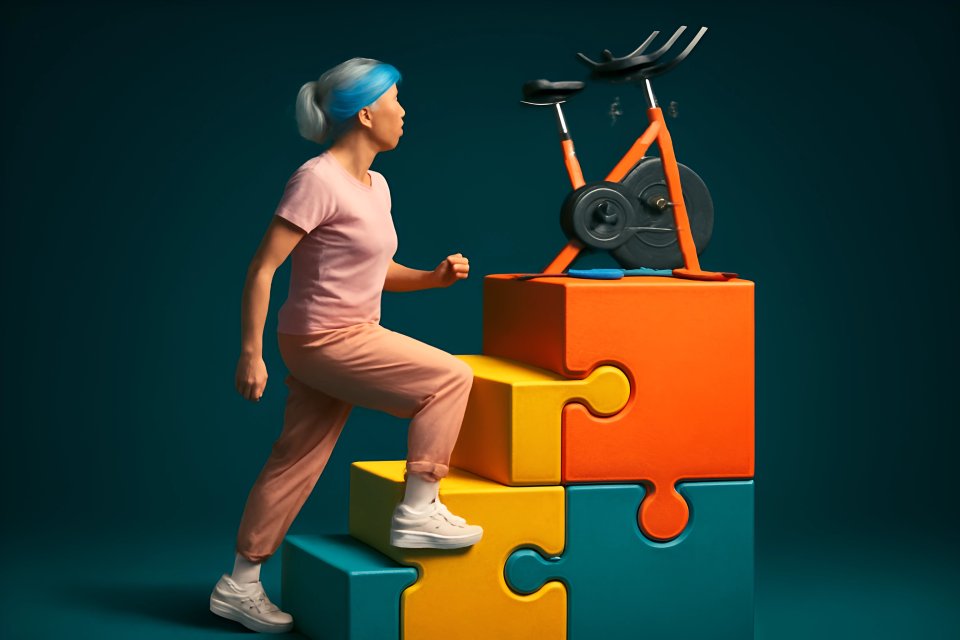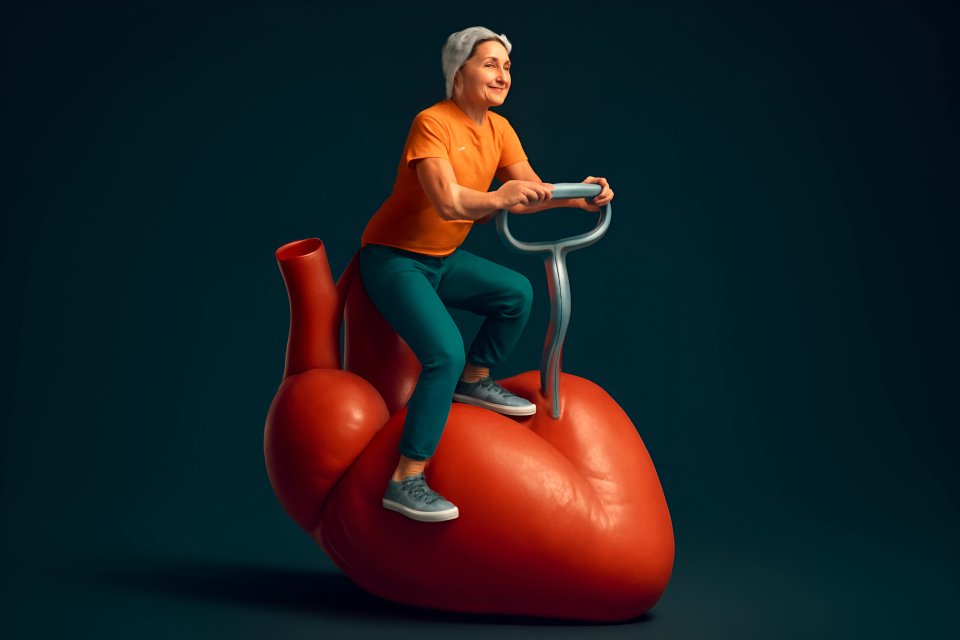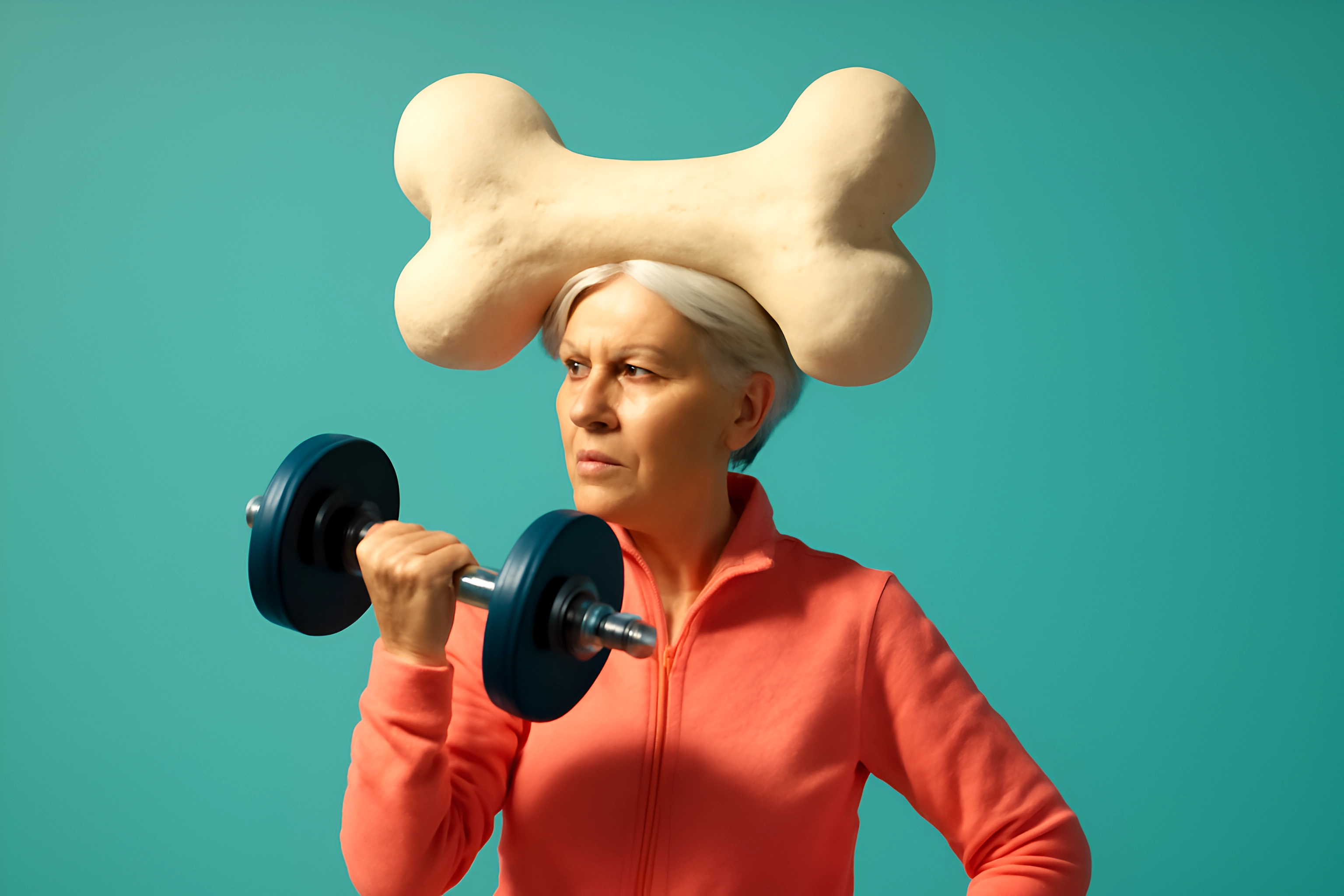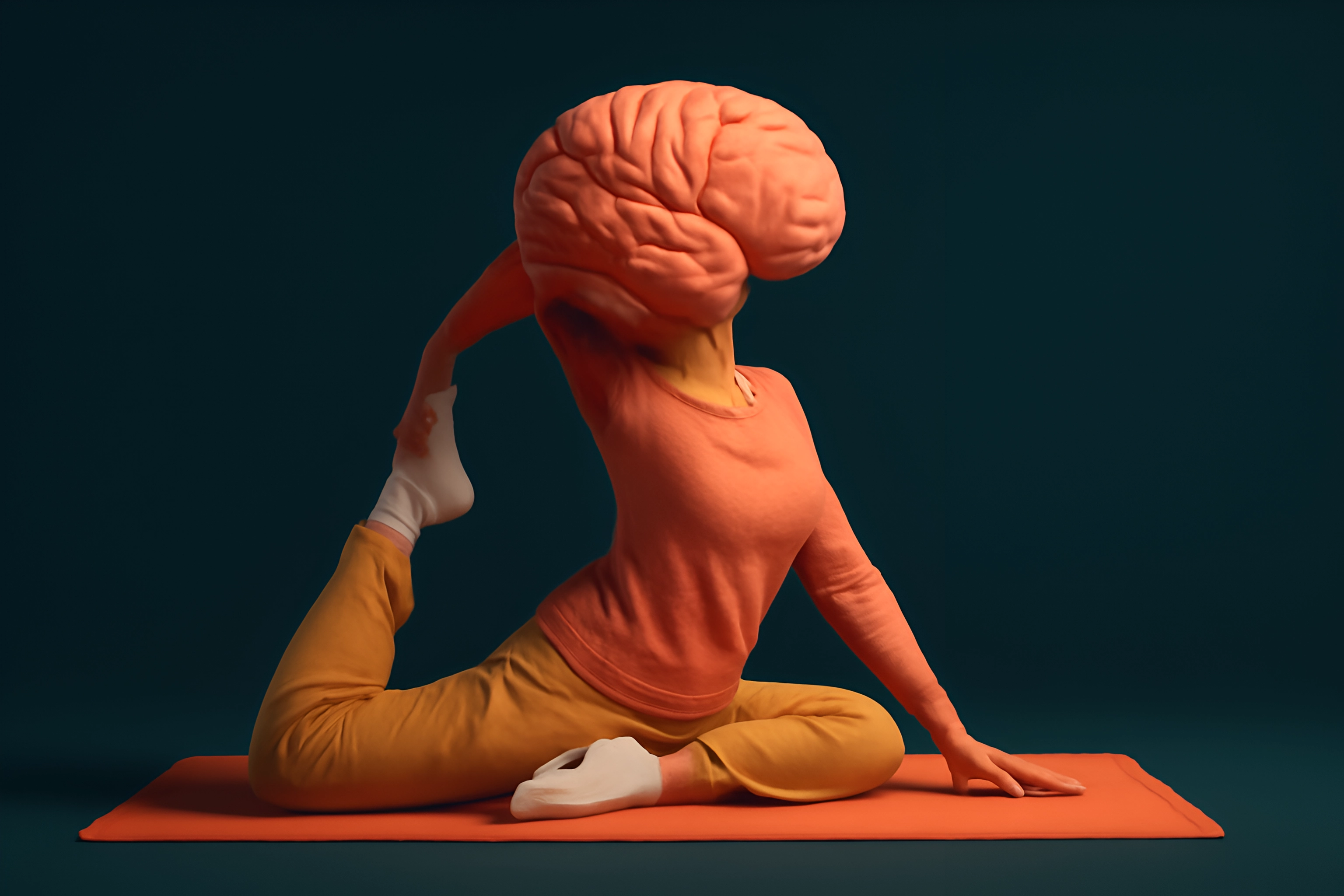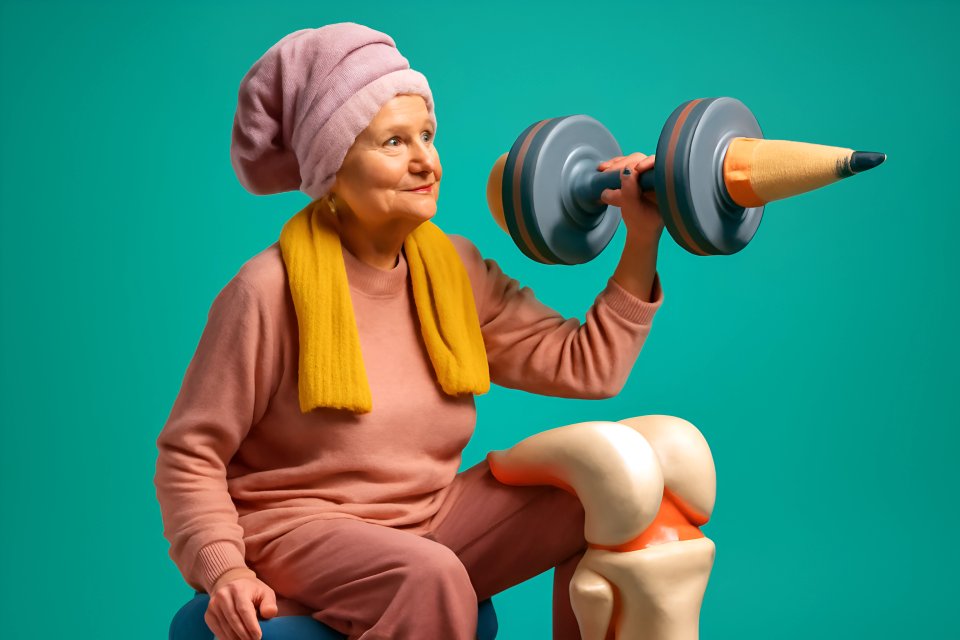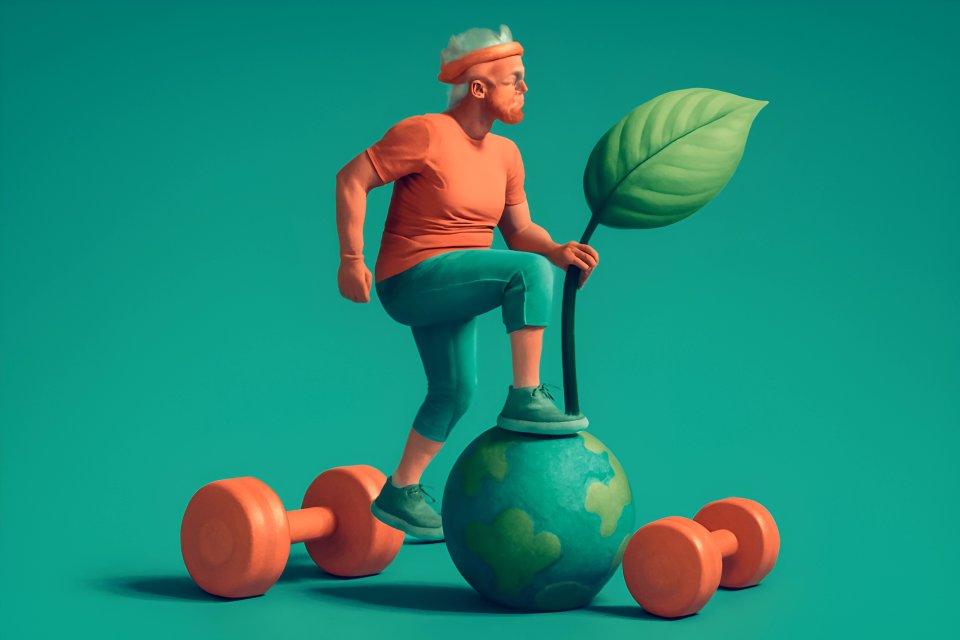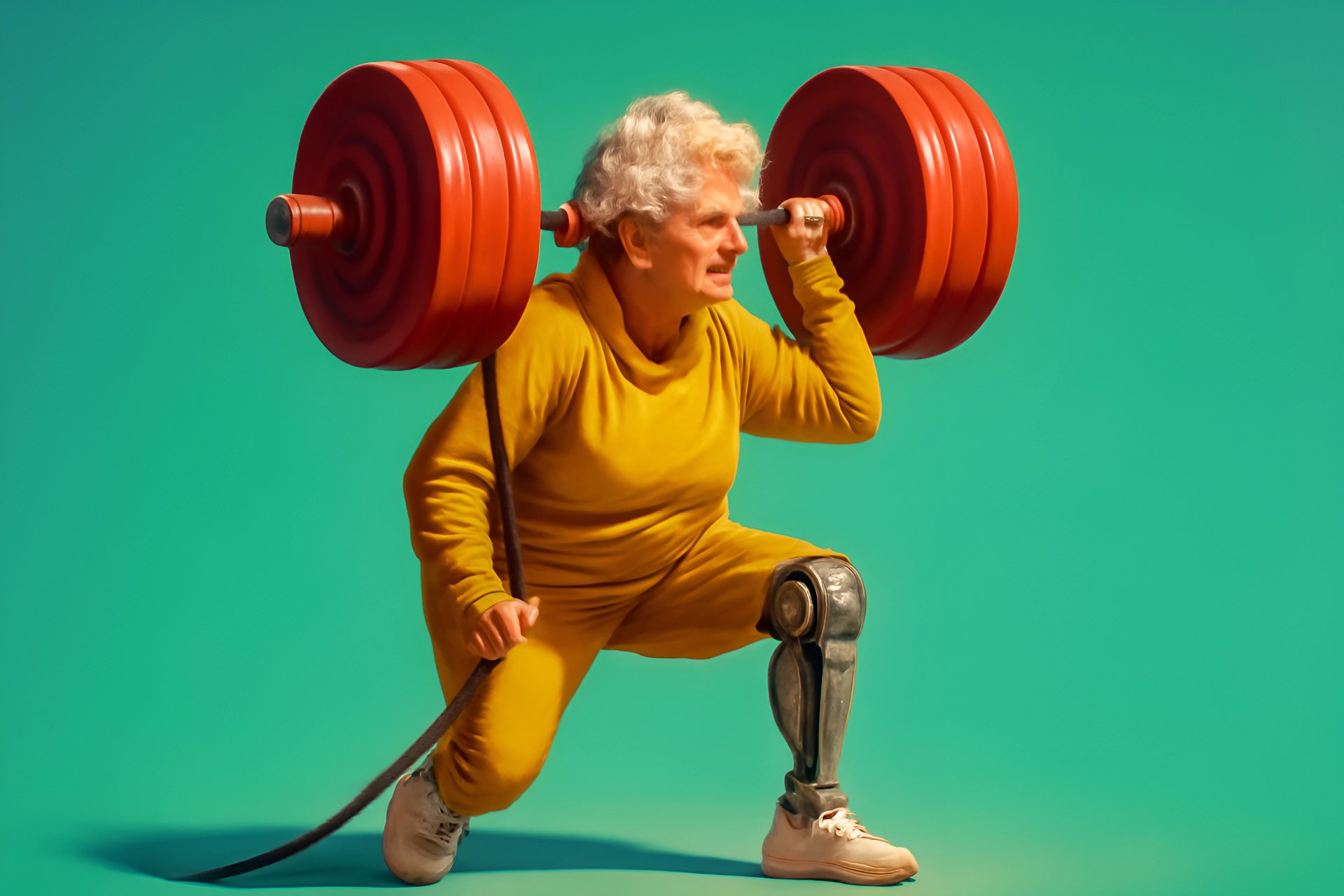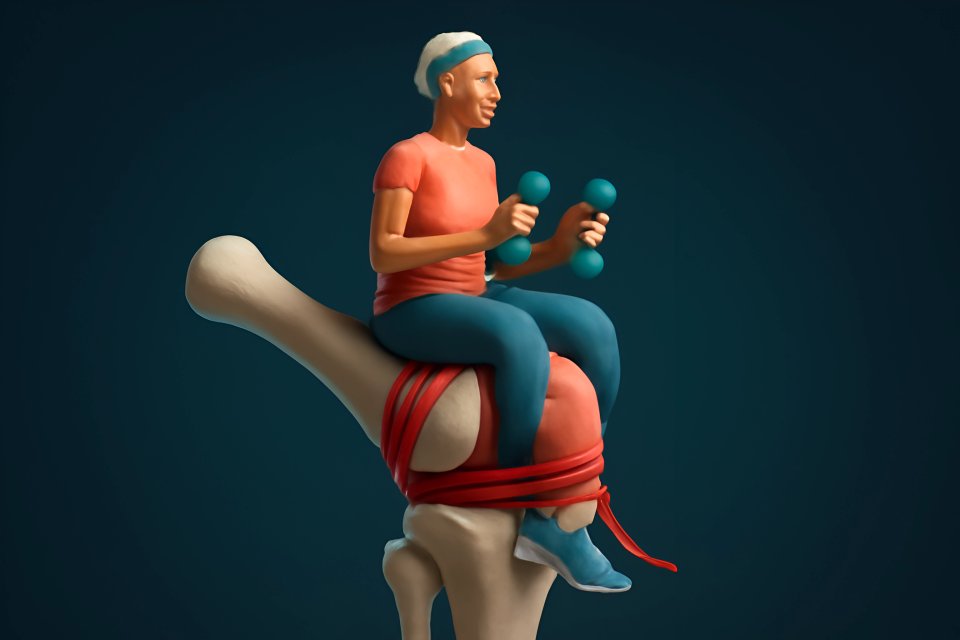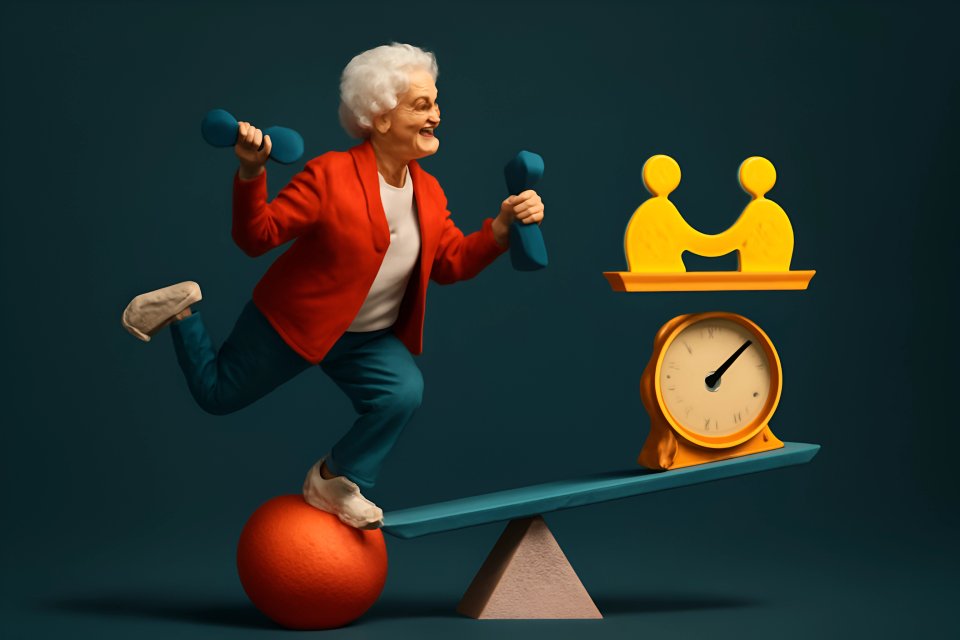
Does that first step out of bed feel a little stiffer than it used to? Do you find yourself groaning when you reach for something on a low shelf? You're not alone, and you are absolutely not powerless against it.
As we journey through life, our bodies naturally change. Muscles can tighten, and joints can lose some of their range of motion, a process accelerated by the natural decline in muscle mass and bone density. But here’s the secret the fittest people over fifty know: this is not a life sentence of stiffness. It’s a signal—a call to action to reclaim your body’s freedom.
This is where the simple, powerful act of daily stretching comes in. This isn't about contorting yourself into a pretzel or becoming a yoga master overnight. It's about dedicating a few minutes each day to an act of profound self-care. In this guide, we’ll walk you through 10 simple and effective daily low-impact stretching exercises for over 50s. These moves are designed to be gentle on your joints while delivering powerful benefits for your flexibility, your confidence, and your overall well-being.
The "Why": The Incredible Benefits of a Daily Stretch
Before we dive into the "how," let's talk about the "why." Why should you carve out even five minutes for this? Because the rewards are not just physical; they are about preserving the life you love. A consistent stretching routine is one of the most effective ways to maintain a limber body and reduce the stiffness that can creep in with age.
The science is clear and incredibly motivating. Research highlighted by AARP shows that a dedicated stretching program can significantly increase your flexibility in as little as four weeks. Imagine feeling a noticeable difference in how you move in just one month. This isn't a far-off dream; it's an achievable goal that starts today.
Here’s what you’re truly gaining with each gentle stretch:
- Increased Flexibility & Mobility: Move with greater ease, whether you're tying your shoes, playing with your grandkids, or reaching for that top-shelf item.
- Reduced Aches and Pains: Alleviate the chronic stiffness that settles in your back, neck, and hips, allowing you to enjoy your day with less discomfort.
- Improved Posture: Stand taller, look more confident, and take the pressure off your spine.
- Lower Risk of Injury: Supple, flexible muscles are far less prone to the strains and sprains that can set you back.
- Stress Relief & Mindful Connection: A few minutes of focused breathing and movement can calm a racing mind and reconnect you with your body in a powerful, positive way.
Before You Begin: Tips for Safe and Effective Stretching
Your safety is the number one priority. These stretches are designed to be gentle, but the key to unlocking their benefits is to perform them correctly. Think of these tips not as rules, but as your personal pact with your body to treat it with the respect it deserves.
Warm-Up Gently
Never, ever stretch cold muscles. A cold muscle is like a brittle rubber band; it's more likely to snap. Before you begin, spend five minutes doing some light movement to increase blood flow. March in place, do some arm circles, or simply walk around your house. This simple step prepares your body for movement and makes your stretches far more effective.
Listen to Your Body
This is the golden rule. A stretch should feel like a gentle, satisfying pull or tension—never a sharp, stabbing, or electric pain. If you feel pain, you’ve gone too far. Ease back to the point where you feel a mild stretch, and hold it there. Your body knows its limits, and your job is to listen and honor them.
Breathe Deeply
Your breath is your most powerful tool for relaxation. As you prepare for a stretch, take a deep breath in. As you move into the stretch, exhale slowly and completely. This simple act of deep, conscious breathing sends a signal to your nervous system to relax, allowing your muscles to release more easily and safely.
Hold, Don't Bounce
Gone are the days of bouncing in a stretch. This practice, known as ballistic stretching, can cause microscopic tears in the muscle and actually trigger a tightening reflex, working against your goals. Instead, ease into each stretch and hold it steady. Experts from Harvard Health and the NCBI agree that holding a stretch for a total of 60 seconds per muscle group is ideal, which can be broken into two or three repetitions of 20-30 seconds each.
Use Support
There is no shame in using a tool to help you. Keep a sturdy, armless chair nearby for every single stretch. It can be used for balance during standing stretches or as the base for seated movements. Using support is a smart strategy that ensures stability, allowing you to focus on the stretch itself rather than worrying about your balance.
The 10 Daily Low-Impact Stretching Exercises
Here is your daily routine for a more flexible, mobile, and comfortable body. Remember to breathe through each movement and hold each stretch for 20-30 seconds.
Neck and Shoulder Release
What It Helps
This gentle move eases the tension that builds up in the neck and upper shoulders, a common storage area for daily stress and a source of headaches.
How to Do It
- Sit tall in your chair, feet flat on the floor.
- Gently tilt your right ear toward your right shoulder, stopping when you feel a light stretch along the left side of your neck.
- Hold here, breathing deeply.
- Slowly return to the center and repeat on the left side.
Pro-Tip: For a deeper stretch, you can gently place your right hand on your head, but do not pull. Let the weight of your hand do the work.
Doorway Chest Stretch
What It Helps
This is the perfect antidote to a day spent sitting or hunching forward. It opens up the chest and the front of the shoulders, dramatically improving posture.
How to Do It
- Stand in an open doorway.
- Place your forearms on the doorframe, with your elbows just below shoulder height.
- Step forward with one foot until you feel a gentle stretch across your chest.
- Keep your chest lifted and your core engaged.
Pro-Tip: If you don't have a doorway, you can do this in the corner of a room. This is a fantastic stretch to incorporate into a broader plan for mastering sustainable low-impact workouts for seniors.
Seated Cat-Cow
What It Helps
A classic yoga pose adapted for the chair, this movement gently mobilizes the entire spine, improving posture and relieving back stiffness.
How to Do It
- Sit on the edge of your chair with your hands on your knees.
- On an inhale, arch your back, lift your chest, and look slightly up (Cow pose).
- On an exhale, round your spine, tuck your chin to your chest, and gently pull your navel in (Cat pose).
- Flow between these two poses for 5-8 repetitions.
Pro-Tip: Focus on initiating the movement from your tailbone and letting it ripple up your spine.
Seated Spinal Twist
What It Helps
This stretch increases rotational mobility in your spine, which is crucial for everyday movements like looking over your shoulder. It can also aid in digestion.
How to Do It
- Sit sideways in your chair, or sit tall facing forward.
- Place your left hand on the outside of your right knee and your right hand on the back of the chair.
- On an exhale, gently twist your torso to the right, using your hands as leverage.
- Keep both hips planted firmly in the chair and repeat on the other side.
Pro-Tip: Let your head and neck be the last things to turn. Never force the twist.
Seated Hamstring Stretch
What It Helps
Tight hamstrings are a primary culprit behind lower back pain. This is one of the most important flexibility exercises for older adults to lengthen these crucial muscles.
How to Do It
- Sit on the edge of your chair.
- Extend your right leg straight out in front of you, with your heel on the floor and your toes pointing up. Keep your left foot flat on the floor.
- Keeping your back straight, hinge forward from your hips until you feel a stretch in the back of your right thigh.
- Hold, then switch legs.
Pro-Tip: If you can't reach your toes, don't worry! The goal is to feel the stretch in your hamstring, not to touch your foot. For more ways to protect your joints, explore our ultimate guide to joint-friendly exercise.
Standing Quad Stretch (with Chair Support)
What It Helps
This stretch targets the large quadriceps muscles on the front of your thighs, which helps with knee health and overall leg mobility.
How to Do It
- Stand tall, holding onto the back of a sturdy chair for balance.
- Bend your right knee and bring your heel up toward your glute.
- Grasp your right ankle or foot with your right hand.
- Gently pull your heel closer to your body until you feel a stretch in the front of your thigh. Keep your knees aligned.
Pro-Tip: If you can't reach your foot, loop a towel around your ankle and hold the ends of the towel to guide the stretch.
Seated Figure-Four Stretch
What It Helps
This is a powerhouse stretch for opening the hips and stretching the glutes and piriformis muscle, a common source of sciatic-like pain.
How to Do It
- Sit tall in your chair.
- Cross your right ankle over your left knee, keeping your right foot flexed to protect the knee.
- If this is enough of a stretch, stay here.
- To deepen it, gently press down on your right knee or hinge forward with a straight back.
Pro-Tip: If you're dealing with specific joint pain, learning how to create customized flexibility and mobility routines for seniors can be a game-changer.
Wall Calf Stretch
What It Helps
Relieves tightness in the calves, which can improve ankle mobility, prevent foot pain like plantar fasciitis, and improve your gait.
How to Do It
- Stand facing a wall, about arm's length away.
- Place your hands on the wall for support.
- Step your right foot back, keeping the leg straight and your heel flat on the floor.
- Bend your front (left) knee until you feel a stretch in your right calf.
Pro-Tip: To stretch a different part of the calf (the soleus muscle), perform the same stretch but with a slight bend in the back knee.
Wrist and Finger Stretch
What It Helps
Maintains dexterity and relieves stiffness from arthritis or repetitive tasks like typing, gardening, or knitting.
How to Do It
- Extend your right arm in front of you, palm facing up.
- With your left hand, gently bend your right wrist down, so your fingers point to the floor.
- Hold, then gently bend the wrist up, so your fingers point to the ceiling.
- Finish by making a gentle fist and then spreading your fingers wide. Repeat on the other side.
Pro-Tip: This is a great stretch to do while sitting at a desk or watching TV.
Ankle Circles
What It Helps
Improves ankle mobility and circulation, which is vital for maintaining balance and reducing the risk of falls.
How to Do It
- Sit in your chair and lift your right foot off the floor.
- Slowly rotate your ankle in a circle 5-10 times in one direction.
- Reverse the direction and repeat.
- Switch to the left foot.
Pro-Tip: For a complete plan, see our step-by-step home mobility routine to improve joint health for seniors.
Creating Your Daily Routine: Consistency is Key
Knowing the stretches is one thing; doing them is another. The magic isn't in doing them perfectly once a week; it's in doing them imperfectly every day. Consistency is what tells your body it's safe to release tension and become more pliable. According to research on muscle stretching in older adults, consistent, static stretching is highly effective for improving range of motion.
When to Stretch
Find a time that works for you and stick to it. Many people find stretching first thing in the morning is the perfect way to combat overnight stiffness and start the day feeling loose. Others prefer an evening routine to unwind and release the tension of the day before bed. There is no wrong time; the best time is the time you will actually do it.
How Long
Aim to hold each stretch for 20-30 seconds, repeating 2-3 times on each side where applicable. The entire routine shouldn't take more than 10-15 minutes. Think of it as a small deposit into your health bank account—one that pays huge dividends in mobility and comfort.
The 5-Minute Rule
Feeling overwhelmed or short on time? Don't skip it entirely. Just commit to five minutes. Pick 3-4 stretches that target your tightest areas—perhaps the hamstrings, chest, and neck. Making these stretching exercises for seniors a consistent part of your day, even for just five minutes, is the secret to lasting results. Five minutes is infinitely better than zero.
Conclusion: Embrace a More Flexible, Vibrant You
You now have a simple, powerful toolkit to fight back against stiffness and reclaim your freedom of movement. These 10 gentle stretches are more than just exercises; they are a daily promise to yourself. A promise to stay active, to remain independent, and to live with less pain and more vitality.
Aging is a journey, not a destination, and keeping your body mobile is one of the best ways to ensure you can enjoy every step of the ride. Embrace this simple practice. Feel the satisfying release of a tight muscle. Notice the ease with which you can bend down. Stand a little taller. Embrace the vibrant, flexible, and confident person you are.
Which of these stretches are you most excited to try? Share your favorite in the comments below!







